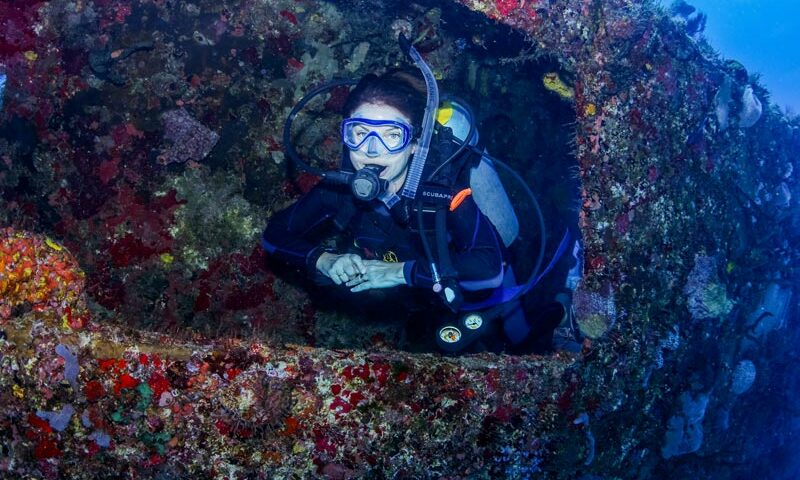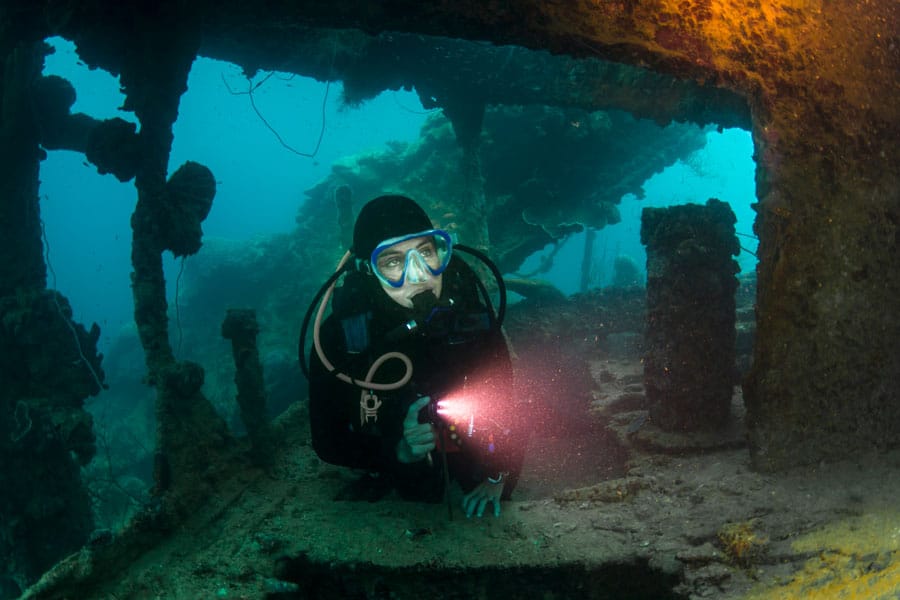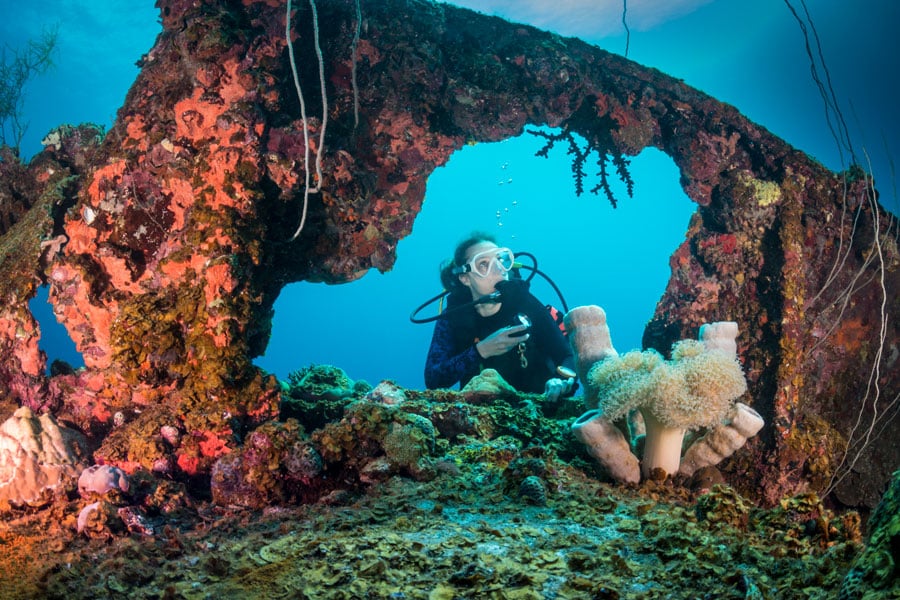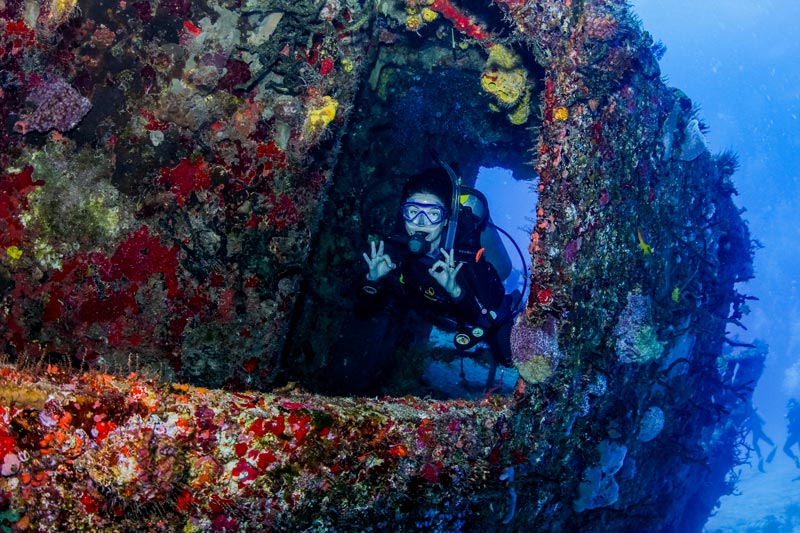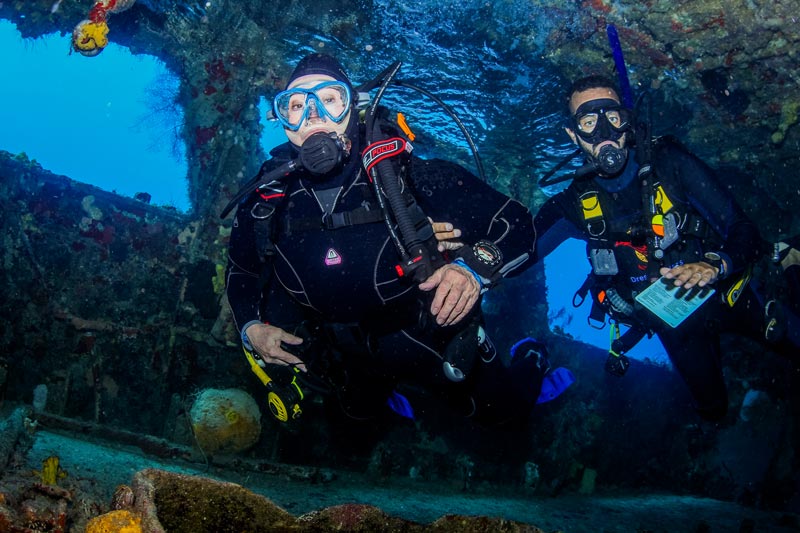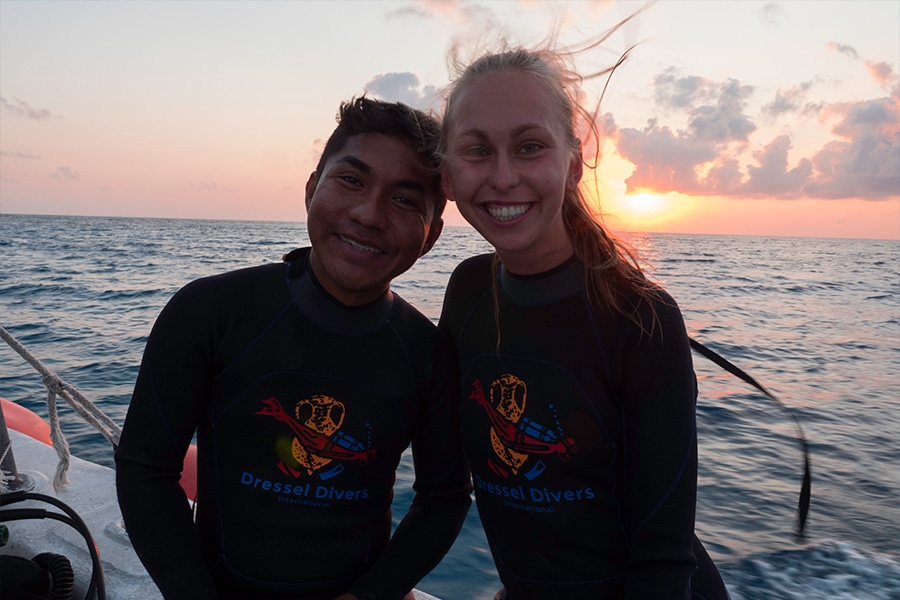The great wreck diver, traveler and adventurer Ibn Battuta said “Traveling leaves you speechless and then turns you into a storyteller.” Wreck diving in the Caribbean elevates this truth to the nth degree.
Look, wreck divers explore sunken vessels, from historic sites to vibrant reefs teeming with life to:
- live thrilling adventures exploring wrecks and uncovering artifacts;
- witness history: dive into WWII planes, ancient ships, and more;
- unearth land vehicle mysteries: trucks, motorcycles, and cars.
In addition, these sunken structures are more than just wrecks. Natural erosion transforms wrecks into thriving ecosystems, bursting with diverse marine life.
Any of these shipwrecks can be the lure that will make you descend towards one of the most fantastic experiences you have ever dreamed of, and that will undoubtedly turn you into a storyteller.
By the way, the narrator of this article about wreck diving is me, Víctor Córdoba. Human Resources Director at Dressel Divers, PADI Course Director, and Technical Instructor Trainer at IANTD. I have more than 6,000 dives in my logbook, and I have carried out and led hundreds of wreck diving expeditions.
So, remember, safe wreck diving requires specific skills.
Ready to Become a Wreck Diver?
Learn how to explore responsibly and safely with a wreck diving certification! Read on for details.




